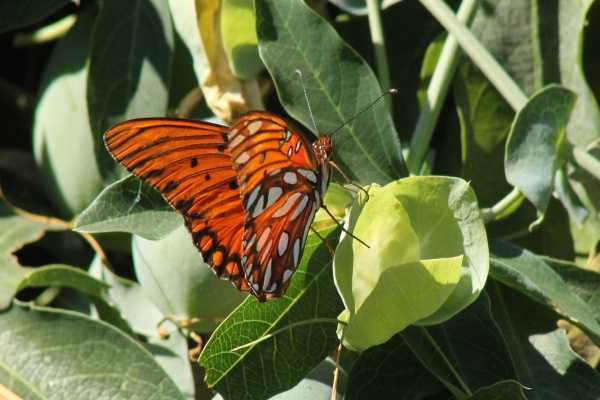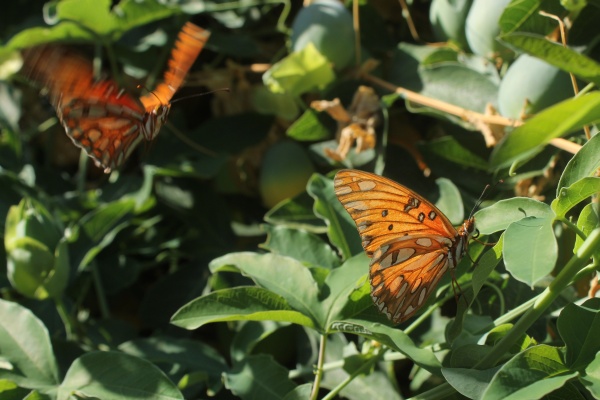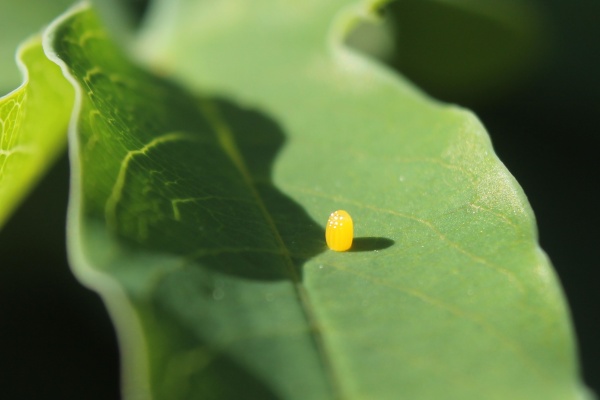
27 July 2015
We normally see butterflies visiting flowers but they also flit from leaf to leaf.
Adult butterflies are on a mission to reproduce. They sip nectar along the way, but the males are looking for females and the females are looking for host plants on which to lay their eggs. When the eggs hatch, the larvae will eat the host leaves and grow into ever-larger caterpillars.
Each species has one or more hosts for their larvae. Monarch caterpillars eat milkweed leaves. Red Admirals eat nettle. Gulf Fritillaries eat passionflower vine.
Butterflies “taste” with their feet, so when the female is ready to lay an egg she flits and lands on leaf after leaf. Standing there she asks herself, “Does this taste good?” If so, she lays an egg.
Sometimes butterflies are fooled. To a West Virginia White butterfly (Pieris virginiensis) the invasive alien garlic mustard tastes like her host plant toothwort so she lays her eggs on garlic mustard and her hatchlings die of starvation.
Tastes can be pretty subtle, too. Monica Miller (my go-to butterfly expert) told me that if a food plant touches a nearby leaf, that leaf might taste good enough to be mistaken by a butterfly.
Here, a female Gulf Fritillary lands on her host plant (tasting it) and a male comes to court her.

And here’s what she was aiming for: She laid an egg on the passion vine.

Watch butterflies “taste” with their feet and you may see one lay an egg.
(photos by Edward Rooks via Wikimedia Commons. Click on each image to see its original)
Interesting…honeybees (Apis mellifera) also taste with their feet, actually with tiny hairs on their tarsi (you remember this term from earlier this year). They also have some of these hairs on their antennae and mouthparts. The bee uses its antennae mostly for smelling the world and their sense of smell is more advanced than their sense of taste.
Very interesting that a plant can pick up the taste of its neighbor by touching it, I wonder if that is a superficial transfer, or something more complex as the neighboring plants communicate with each other? Plants have far more complex social lives than people previously thought.
I suppose when most people think of milkweed, they think of common milkweed. There are a number of others and one of the absolute best for attracting monarchs is swamp milkweed (Asclepias incarnata), but it certainly doesn’t require a swampy habitat to grow. In trying to grow seedlings, I eventually had to cover them with landscape cloth to keep the monarchs from laying eggs on the small plants, and then the caterpillars from devouring them.
Swamp milkweed has another advantage, too. It has a clumping root growth habit which makes it much better for small properties than common milkweed which has a running root system.
I had a monarch on one of my plants today!